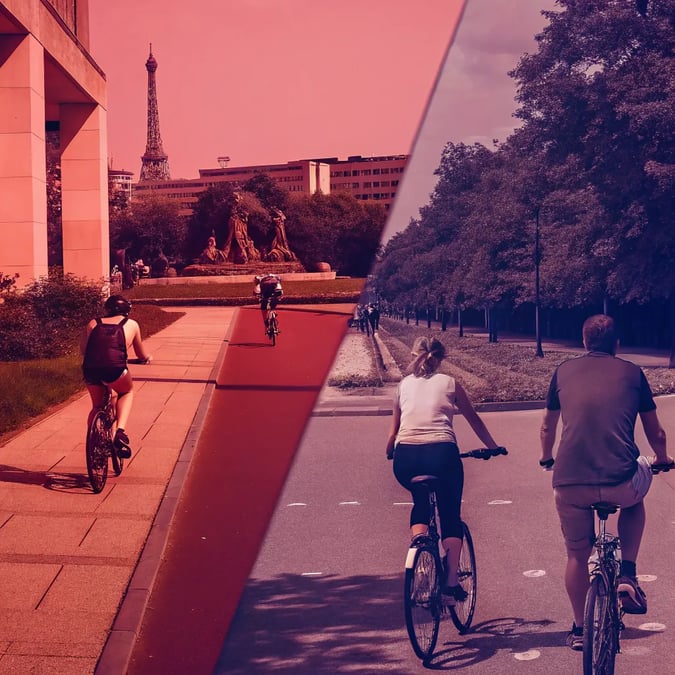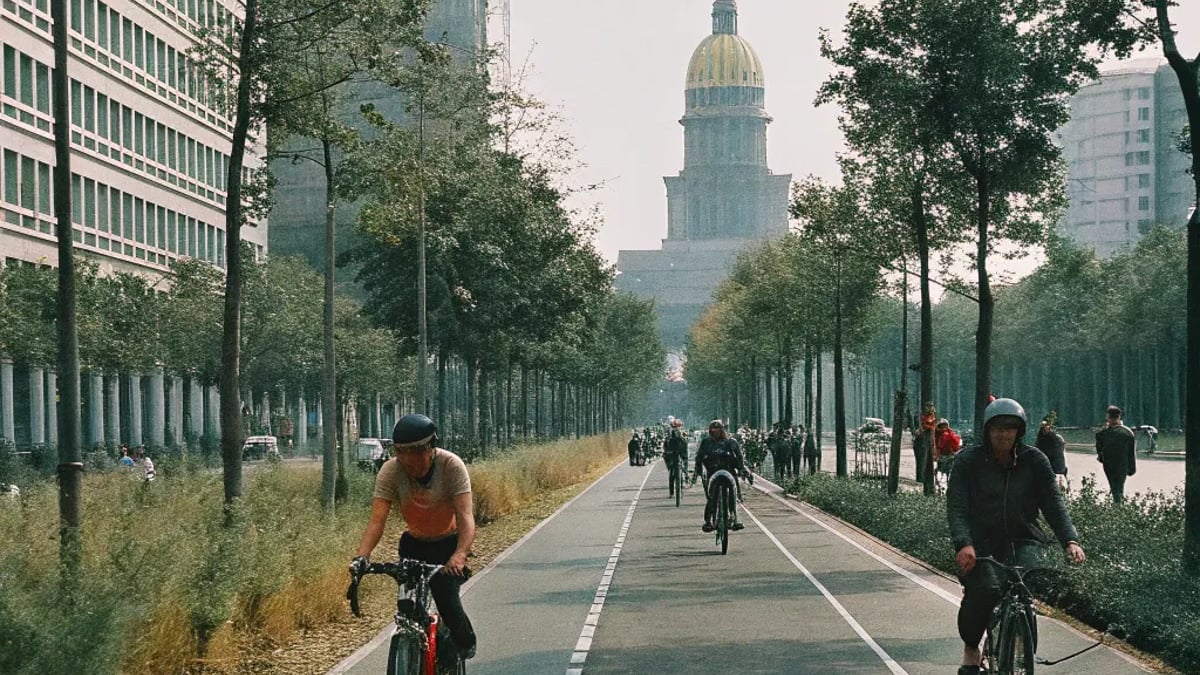
Imagine gliding through tree-lined streets, feeling the breeze on your face as you discover hidden neighborhoods and iconic landmarks at your own pace. Exploring a city by bicycle offers a unique perspective that walking or driving simply can't match—it's fast enough to cover significant ground but slow enough to soak in the details.
Why Two-Wheeled Tourism is Booming
The pandemic sparked a global cycling renaissance that shows no signs of slowing down. More cities are investing in cycling infrastructure, recognizing both the environmental benefits and the growing demand from tourists seeking authentic, active experiences.
"People want meaningful travel experiences that connect them to a place," says Laura Jenkins, sustainable tourism consultant. "Biking lets you experience a city's rhythm in a way that tour buses never could."
Beyond the experiential benefits, cycling tourism brings economic advantages too. Studies show bike tourists tend to stay longer and spend more in local businesses compared to car-based visitors. Plus, there's the undeniable health benefit of staying active while exploring new destinations.

I discovered this firsthand last summer in Copenhagen—stopping spontaneously at a neighborhood café I'd have never noticed from a car, chatting with locals at traffic lights, and covering twice the ground I would have on foot. The experience completely changed how I approach city exploration.
Let's pedal through some of the world's most bike-friendly cities worth exploring on two wheels.
Portland: America's Cycling Capital
Portland, Oregon consistently ranks among America's most bike-friendly cities, and for good reason. The Rose City boasts over 385 miles of bikeways, including dedicated lanes, off-street paths, and neighborhood greenways.
What makes Portland truly special is how cycling has been woven into the city's identity. You'll find bike-themed coffee shops, dedicated bike-only bridges, and even "bike trains" where commuters ride together along popular routes.
The city's extensive bike share program, BIKETOWN, makes it incredibly easy for visitors to hop on two wheels. With over 1,500 orange bikes available at stations throughout the city, you can easily grab one using their mobile app.

Must-ride routes include:
- The Eastbank Esplanade for stunning views of downtown across the Willamette River
- The Springwater Corridor, which follows an abandoned rail line through natural areas
- The North Williams Avenue corridor, where you can sample Portland's famous food scene between pedal strokes
"Portland's biking culture isn't just about transportation—it's about community," explains Tom Miller, a local cycling advocate. "Our Sunday Parkways events temporarily close streets to cars, creating pop-up public spaces where thousands gather to ride, walk and connect."
Copenhagen: The Original Cycling Paradise
No discussion of bike-friendly cities would be complete without Copenhagen, where cycling isn't just transportation—it's a way of life. An astonishing 62% of residents commute by bike daily, using the city's 385km of dedicated cycle tracks.
What makes Copenhagen unique is how thoroughly the infrastructure prioritizes cyclists. Bike lanes are typically raised and separated from both car traffic and pedestrians. Traffic signals are timed for "green waves" so cyclists maintaining a moderate pace hit green lights all the way through major corridors.
The city's bike share system features tablets with GPS navigation built into the handlebars—incredibly helpful for tourists trying to find their way around. The bikes even have electric assist to help with longer journeys.
Don't miss riding through:
- Nørrebro, recently named one of the coolest neighborhoods in the world, with its diverse cultural scene
- The Harbor Circle route, offering stunning waterfront views
- Superkilen, an urban park featuring objects from 60+ countries representing the area's diverse population
Amsterdam: Cycling Through History
Amsterdam's relationship with bicycles goes back generations, with more bikes than people in the city (approximately 881,000 bikes to 821,000 residents). The flat landscape makes for easy riding, while the compact historic center is often faster to navigate by bike than any other transport mode.
Unlike some cities where cycling remains somewhat countercultural, in Amsterdam it's simply the default way to get around for everyone from business executives to grandparents.
The city's narrow streets weren't built for cars, making bikes the perfect way to explore the historic canal ring, a UNESCO World Heritage site. Visitors can easily rent bikes from countless shops or use the bike-sharing system.
While riding, keep in mind that cycling here follows distinct social norms—locals use hand signals religiously and expect others to do the same. There's an unspoken etiquette to follow, but once you get the hang of it, you'll feel like a local in no time.
Memorable routes include:
- The Amstel River route, passing windmills and countryside just minutes from the city center
- Vondelpark, the city's beloved green space
- The Amsterdam Forest, surprisingly vast and wild for being so close to the urban center
San Francisco: Conquering Hills on Two Wheels
San Francisco might seem counterintuitive as a cycling destination given its infamous hills, but the city has invested heavily in making itself bike-friendly, with electric bike rentals helping tame those inclines.
The SF Bay Trail offers a relatively flat route around much of the city's iconic waterfront. You can pedal across the Golden Gate Bridge to Sausalito (and take the ferry back if you're tired), or explore Golden Gate Park, which closes many roads to cars on weekends.
The Wiggle, a zig-zagging bike route designed specifically to minimize hill climbing, helps cyclists navigate between the eastern neighborhoods and western destinations while avoiding the steepest terrain.
"What makes San Francisco special for cycling is the diversity of experiences within a compact area," says Jen Wong of the San Francisco Bicycle Coalition. "In a single day, you can ride along urban neighborhoods, through a massive park, and along dramatic coastline—all without leaving the city."
Melbourne: Southern Hemisphere's Cycling Gem
Australia might not be the first place that comes to mind for urban cycling, but Melbourne has developed into the southern hemisphere's premier bike city. The Capital City Trail forms a 29km loop around the city center, connecting major parks and attractions.
Melbourne's bike share program and extensive network of dedicated lanes make it accessible for visitors. The city's famous coffee culture means plenty of café stops along your route—essential for proper cycling fuel!
The city hosts numerous cycling events throughout the year, including the Melbourne Bike Festival, which transforms streets into car-free cycling zones for a day.
How Do These Cities Create Such Bike-Friendly Environments?
What separates truly bike-friendly cities from those merely adding a few painted lanes? The most successful cycling cities share several key characteristics:
- Separated infrastructure: Physical barriers between cars and bikes
- Connectivity: Routes that form networks rather than disconnected segments
- Inclusivity: Designs that work for all ages and abilities, not just confident cyclists
- Integration: Seamless connections with public transit
- Culture: Community events and education that normalize cycling
As Sarah Williams, urban planning professor at MIT, notes: "The most successful cycling cities don't just build infrastructure—they create complete ecosystems where cycling becomes the obvious choice for many trips."
Planning Your Two-Wheeled Adventure
Before setting off on your cycling adventure in any of these cities, consider these practical tips:
- Familiarize yourself with local cycling rules and etiquette
- Download city-specific cycling apps that show bike-friendly routes
- Consider guided bike tours for your first day to get oriented
- Check if your accommodation offers bike storage or rentals
- Pack appropriate gear for the local climate
Remember that bike share systems typically require credit cards and sometimes mobile apps, so have these ready before your trip.
While these cities lead the pack, many others are rapidly improving their cycling infrastructure—Barcelona, Seville, Montreal, Tokyo, and Bogotá all deserve honorable mentions for their recent progress.
Whichever destination you choose, exploring on two wheels offers a perspective you simply can't get any other way—the perfect balance of immersion and coverage that makes for truly memorable travel experiences.
Disclaimer: This article is for informational purposes only. Always wear appropriate safety gear, follow local traffic laws, and ride within your ability level. Consider consulting with a healthcare provider before undertaking significant physical activity, especially if you have existing health conditions.
Tags

About Evelyn Grant the Author
Evelyn Grant is a trailblazer in the world of cycling fashion, known for combining functionality with style. With over a decade of experience, she designs apparel that meets the demands of avid cyclists while making a bold fashion statement.
Recommended Articles
TV Series Returning in 2026 After Initial Cancellation
Exciting revivals of beloved TV series are set for 2026, showcasing the evolving landscape of television and fan engagement.
Exploring Approaches to Modern Parenting Challenges
Discover innovative strategies for tackling modern parenting challenges and nurturing emotional well-being in today's complex family dynamics.
Eyelid Dermatitis Explained: Symptoms, Causes, and Solutions
Discover eyelid dermatitis, its symptoms, causes, and effective solutions to manage and treat this uncomfortable skin condition.
Eyelid Dermatitis Triggers That May Be Lurking in Your Routine
Discover common eyelid dermatitis triggers in your daily routine, from skincare products to allergens, and learn how to manage your symptoms effectively.
The Best Foods to Strengthen Your Bones as You Age
Discover the best foods that promote bone health as you age, focusing on essential nutrients like calcium and vitamin D for stronger bones.




